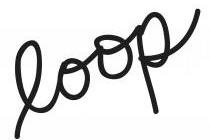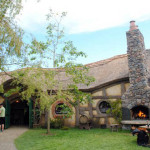What does a filmmaker do when their career seems to have reached a tumultuous plateau? For Alfred Hitchcock, well, let’s just say there was no way he was stopping at movie #62. He had to find the perfectly twisted story to keep them talking. But what? What would be the next great Hitchcock film?
So begins Sascha Gervasi’s Hitchcock: the story of a longtime director’s genius turned completely mad during the tale end of his career while making his 1960 horror picture Psycho, based off Robert Bloch’s controversial 1959 novel.
The storyline, if you know anything about Psycho, is absurd on many different levels (like what normal person could have predicted any of that psychosis at the end?). Initially Paramount had rejected the idea of making Hitchcock’s rendition altogether—particularly due to the oh-so-famous shower scene that seemed, at the time, impossible to portray.
But a persistent Hitchcock, played quite appropriately and perfectly by Anthony Hopkins (and by way of that giant fat suit!), was set on producing the movie regardless, even if it meant selling his pool. Which didn’t exactly make his wife Alma Melville (Helen Mirren) the happiest. And as you learn throughout Hitchcock, the two’s marriage gradually depletes as they go their own artistic routes, by way of virtue, and well, Alma not being able to withstand Hitchcock’s snowballing crazy that is most evident in the poor shape of his health (he eats a lot!)
When the film’s production finally starts to come together and Hitchcock is searching for a blonde to portray Psycho‘s leading lady Marion Crane, he comes across a photo of Janet Leigh (Scarlett Johansson), and finds her perfect for the part. He eventually becomes fascinated by her beauty and “not exactly boyish” features. This hurts Alma, though Leigh maintains her professional demeanor despite the knowingness of Hitchcock’s gaze, and the two remain cordial towards one another.
Things start to take a wild turn after somewhat of a “freakout” by Hitchcock during the shoot of the shower scene, when he steps in and takes hold of the knife, encouraging Leigh to further exaggerate her acting out Marion Crane’s reaction to Norman Bates (James D’Arcy). Well, as you will see, Hitchcock didn’t exactly do it in the most comforting of fashions, coming a litte too close with that knife for Leigh to not feel terrified. But what did you expect, from a man obsessed with murder?
I don’t want to spoil the whole thing, but just know that Hitchcock is exquisite due to the cast really making the story feel real, but also in the experience we get of just how mad Hitchcock really was: what an artist will do to outdo his own self during a near-end career crisis, and how he must secretly deal with all his demons, so hungry and alone.
(photo via Wide Movie)



